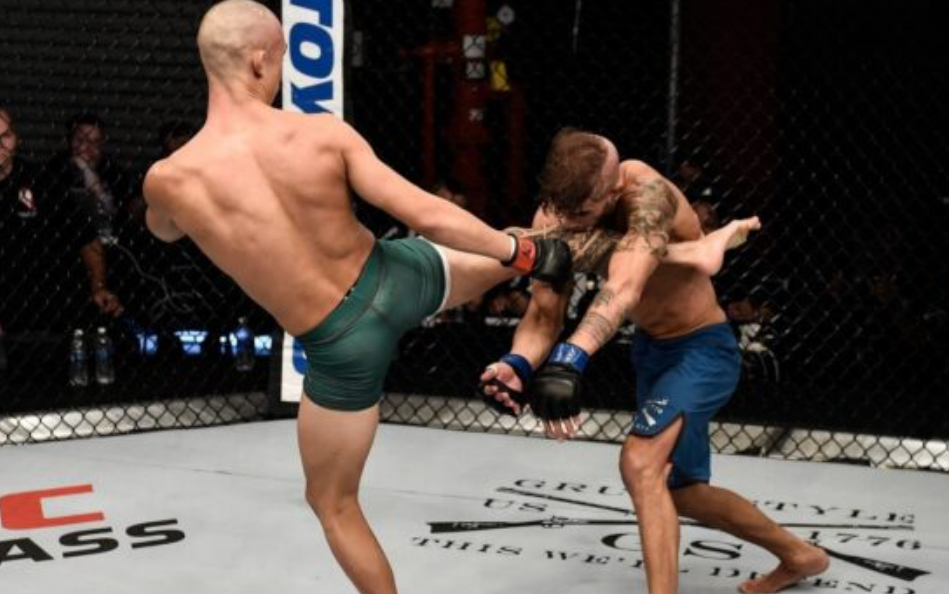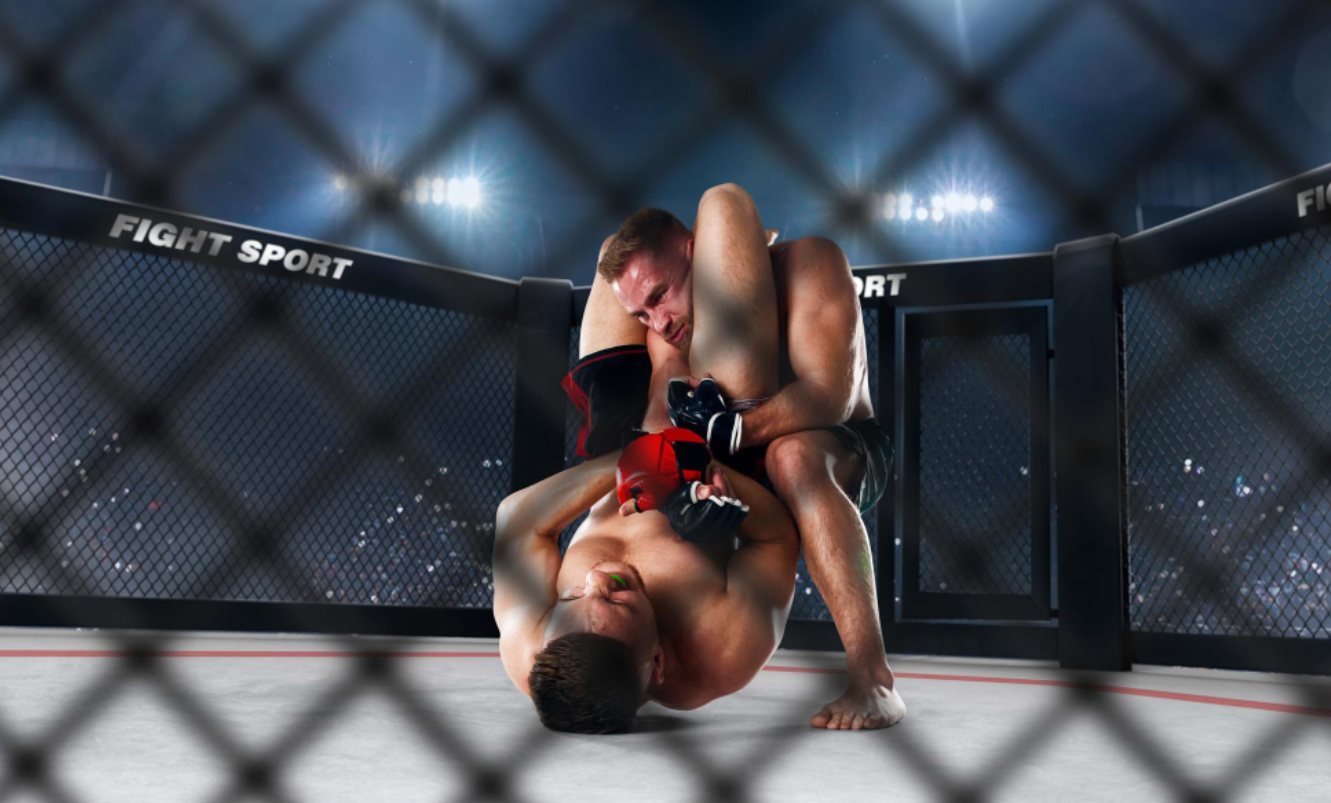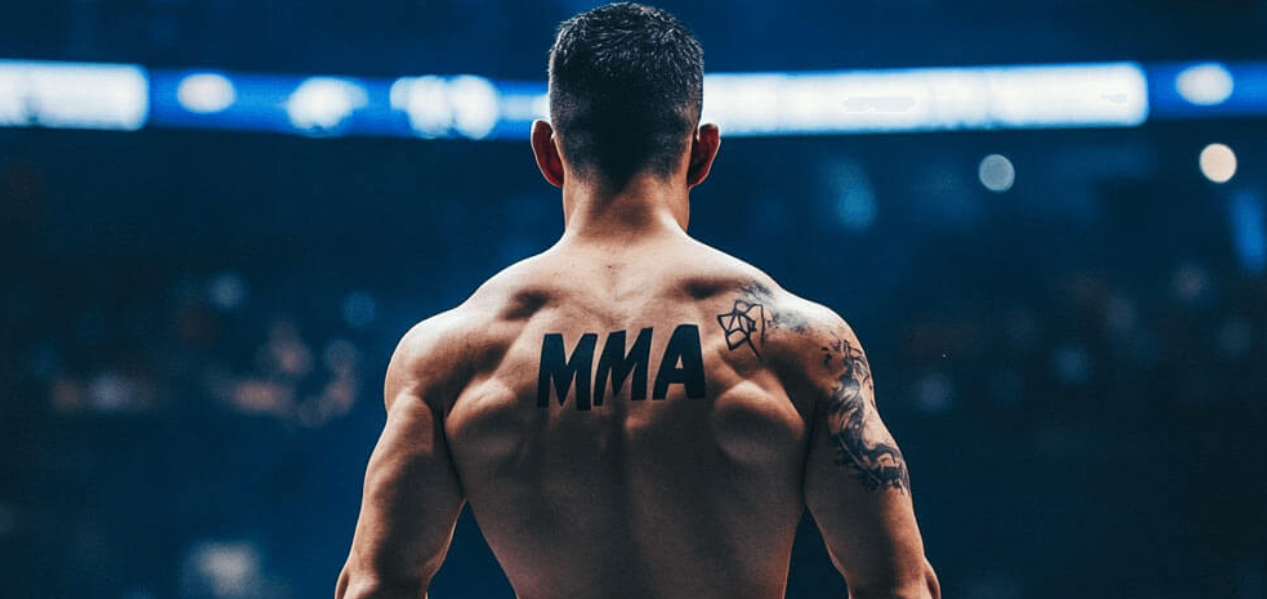How to Bet on MMA
Mixed martial arts has evolved into one of the most exciting wagering markets in American sports. Whether you’re watching a championship bout at UFC 309 or analyzing fighter matchups for the upcoming PFL season, understanding how to bet on MMA gives you the tools to make informed decisions and potentially profit from your sports knowledge. This guide breaks down everything US bettors need to know about wagering on cage fights, from basic bet types to advanced statistical analysis that separates winning bettors from casual fans.
A brief explanation of what MMA betting is in the USA
Wagering on mixed martial arts involves placing bets on cage fighting competitions through licensed sportsbooks operating legally within the United States. When you bet on MMA, you’re predicting outcomes of fights ranging from who wins to specific methods of victory, round totals, and even live prop bets during the action. The American combat sports wagering market has grown exponentially since the Supreme Court’s 2018 decision to overturn PASPA, opening doors for individual states to legalize sports gambling.
US bettors now have access to numerous regulated platforms where they can place wagers on everything from UFC main events to regional promotions. The wagering process involves analyzing fighter statistics, understanding odds formats, and selecting from various bet types that match your risk tolerance and expertise level. The combat sports betting market in the USA generates over $500 million annually during major UFC pay-per-view events, with live betting accounting for approximately 35-40% of total handle as fans react to real-time fight dynamics.
🥊 MMA betting growth: US MMA betting volumes have surged 280% since 2019, with UFC championship fights generating $150-250 million in betting handle across regulated markets. The sport’s unpredictable nature—where underdogs win approximately 35-40% of fights compared to 25-30% in other major sports—creates unique value opportunities for analytical bettors who can identify favorable matchups beyond public perception.
The popularity of UFC, Bellator, PFL for betting
The Ultimate Fighting Championship dominates American combat sports wagering with 40+ annual events generating massive action on the books. UFC pay-per-view cards featuring champions consistently draw the highest action.
Bellator ranks second in North America, offering competitive odds on veteran fighters and rising prospects. The tournament format creates unique opportunities beyond standard UFC wagering. Bellator events typically feature slightly softer betting lines due to less public betting pressure, creating value opportunities for bettors willing to analyze lesser-known fighters with technical advantages.
The Professional Fighters League’s season structure with $1 million prizes provides systematic wagering opportunities. PFL matchup forecasts grow increasingly popular as bettors track fighter progression through brackets. The season-long format allows sharp bettors to identify undervalued fighters early in the season whose odds haven’t adjusted to their improving form and stylistic advantages within the tournament bracket.
💡 Promotion comparison: UFC events generate 70-75% of total MMA betting handle in the USA, with Bellator capturing 15-20% and PFL/regional promotions accounting for the remaining 5-10%. However, value opportunities often emerge more frequently in Bellator and PFL markets where public betting volume is lower and sportsbooks dedicate fewer resources to setting sharp opening lines, creating exploitable inefficiencies for informed bettors.
The legality of MMA betting in the USA
Wagering on cage fights is legal in 30+ US states with varying regulations. Nevada, New Jersey, Pennsylvania, and Colorado lead with robust online and retail frameworks, while others restrict wagering methods or promotions.
Federal law lets states regulate independently, setting their own age limits (typically 21), licensing, and taxes. Some states allow only retail wagers; others embrace full mobile platforms. State gaming commissions conduct regular audits of licensed sportsbooks, ensuring fair odds calculation, proper fund segregation, and adherence to responsible gambling protocols that protect consumers.
Always verify your sportsbook holds proper state licensing. Unlicensed offshore platforms create legal risks and eliminate consumer protections.

MMA betting basics in the USA 🥊
 Before diving into advanced strategies and complex wagers, mastering fundamental concepts is essential for success. This section breaks down core mixed martial arts wagering principles, explaining how legal gambling operates across US states. It covers which events generate the most action and what newcomers need to know before placing their first wager. Understanding these basics and applying proven bet mma tips creates a solid foundation for profitable long-term betting.
Before diving into advanced strategies and complex wagers, mastering fundamental concepts is essential for success. This section breaks down core mixed martial arts wagering principles, explaining how legal gambling operates across US states. It covers which events generate the most action and what newcomers need to know before placing their first wager. Understanding these basics and applying proven bet mma tips creates a solid foundation for profitable long-term betting.
What is MMA betting?
Cage fighting wagers cover all bets on combat sports competitions. You risk money on predicted fight outcomes, with returns based on odds reflecting each fighter’s winning chances.
The market extends beyond winner selection to victory methods, round finishes, distance predictions, and countless fighter props. American sportsbooks use moneyline formats where favorites show negative numbers, underdogs display positive values. MMA betting offers unique depth because fight outcomes depend on multiple skills—striking, grappling, cardio, and mental toughness—creating more variables to analyze than traditional sports where a single performance metric might dominate.
📊 Betting complexity advantage: MMA wagering provides more exploitable edges than team sports because individual fighter performance depends on 8-12 distinct skill areas (striking defense, takedown offense, cardio, cage control, etc.) versus team sports where individual contributions blur into collective performance. Professional MMA bettors who deeply analyze stylistic matchups can achieve 55-60% win rates compared to 52-54% in NFL or NBA betting, demonstrating MMA’s analytical accessibility for dedicated handicappers.
How legal MMA betting works in the USA
Legal cage fighting wagers operate through state-licensed sportsbooks with regulatory oversight. Platforms verify bettor age and location, implement responsible gambling tools, and maintain payout reserves.
Registration requires identity verification confirming you’re in a legal wagering state. Geolocation technology ensures compliance, blocking wagers from restricted areas. Most sportsbooks use GPS verification combined with IP address tracking to confirm you’re physically located within state borders, updating location checks every 3-5 minutes during active betting sessions to maintain continuous compliance.
After verification, deposit funds via bank transfers, credit cards, or cryptocurrency at select operators. Winnings credit directly to your account for withdrawal or future wagers.
Top MMA events for betting
| Promotion | Top fighters/champions | Annual events | Betting volume |
|---|---|---|---|
| UFC | Alex Pereira, Islam Makhachev, Leon Edwards, Jon Jones | 40+ | Highest |
| Bellator | Patricio Freire, Usman Nurmagomedov, Corey Anderson | 12-15 | High |
| PFL | 2024 Champions across 6 weight divisions | 10 (seasonal) | Growing |
| ONE Championship | Anatoly Malykhin, Adriano Moraes, Tawanchai PK | 50+ (Asia focus) | Moderate in US |
🎯 Event betting strategy: UFC pay-per-view main cards generate 4-6x more betting volume than Fight Night events, resulting in sharper lines and less value on main event favorites. Conversely, preliminary card fights and international promotions like ONE Championship feature softer lines where informed bettors can find consistent edges. Professional MMA bettors often allocate 40-50% of their action to non-headliner fights where public attention is minimal and sportsbook pricing reflects less sophisticated modeling.
Overview of all types of MMA bets and their features ✅❌💡
| Bet type | Description | Example | Risk level |
|---|---|---|---|
| Moneyline | Pick the fight winner | Fighter A -180 vs Fighter B +150 | Low to medium |
| Method of victory | Predict how the fight ends | KO/TKO, submission, decision | Medium |
| Round betting | Specific round for finish | Fighter A by KO in Round 2 (+800) | High |
| Over/under rounds | Total rounds completed | Over 2.5 rounds (-130) | Medium |
| Parlay | Combine multiple bets | 3 fighters all win (+450) | High |
| Prop bets | Specific fight occurrences | Will fight go to ground? Yes/No | Medium |
Moneyline bets are foundational combat sports wagers. Fighter at -200 requires risking $200 to win $100. Underdog at +180 returns $180 profit on $100 bet. Odds reflect winning probability per bookmakers and market action.
Method of victory markets specify how fighters win. Dominant wrestlers offer better submission value than moneyline bets, while knockout artists provide enhanced stoppage odds. This rewards deeper fight analysis. For example, a fighter at -150 on the moneyline might be +200 to win by submission, offering 3.3x better payout for identifying their most likely path to victory based on opponent’s defensive vulnerabilities.
Round wagers pay substantially for correctly predicting winner and specific finish round. “Fighter A by KO/TKO in Round 3” might pay +900, but demands precise fight prediction.
🥊 Method betting edge: Method of victory bets often provide superior value compared to straight moneylines when you can identify stylistic certainties. A submission specialist facing an opponent with 40% takedown defense and poor ground game might be -180 on the moneyline but +140 to win by submission—a dramatic value increase when submission represents their most probable victory path. Professional bettors allocate 30-40% of their MMA wagers to method markets, recognizing they often contain softer lines than heavily-bet moneylines.
Popular props in MMA betting
Proposition bets add strategic depth to fight wagering. Popular mixed martial arts predictions include:
Popular MMA props:
- Fight goes distance – Will judges score the bout?
- First blood – Which fighter gets cut first?
- Knockdown occurrence – Will either fighter hit canvas?
- Significant strikes landed – Over/under fighter totals
- Takedown success – Number of successful takedowns
Fighter-specific props might include predictions on takedown success rates or whether a grappler attempts submissions. These markets reward detailed understanding of fighting styles and statistical tendencies.
Live/in-play betting for MMA
Live wagering transforms fight engagement, allowing bets throughout the bout as odds shift with momentum changes. When a fighter dominates Round 1, their odds tighten while the opponent’s lengthen, creating potential value opportunities.
Successful live wagering requires quick analysis and discipline. Watch for stamina issues, injury impacts, or stylistic adjustments between rounds. A wrestler struggling with takedowns might see favorable odds despite being the pre-fight favorite, creating middle-fight value. Live betting markets update every 15-30 seconds during active rounds, with significant odds swings occurring after knockdowns (10-25% shift), successful takedowns (5-15% shift), or visible fatigue signs (8-18% shift).
💡 Expert tip: Live wagering works best when you’ve researched both fighters thoroughly before the bout begins. Quick decisions need foundational knowledge you can’t acquire mid-fight.
Common mistakes to avoid in MMA betting 🚫
Even experienced bettors fall into predictable traps that drain bankrolls and diminish long-term profits. Recognizing these common errors before they cost you money is crucial for sustainable success. From overvaluing favorites to ignoring critical pre-fight factors, these mistakes appear simple but repeatedly catch bettors off guard. Learning what not to do often proves as valuable as mastering winning strategies.
Betting only on favorites
Constantly backing favorites creates mathematical disadvantages. Champions at -400 require risking $400 to profit $100. One upset eliminates multiple wins’ worth of profits.
Smart wagering balances favorites with selective underdogs. Regional show underdogs often provide better value than popular names with inflated odds. Historical data shows that MMA underdogs priced between +200 and +350 win approximately 28-32% of fights, yet their odds imply only 22-25% win probability—a 6-7% edge that compounds significantly over large sample sizes for disciplined bettors.
❌ Avoid
Parlaying heavy favorites assuming safe returns
✅ Instead
Evaluate fights independently, seeking value regardless of favorite status
Ignoring fighter’s style and matchups
Identical records don’t guarantee similar outcomes—stylistic matchups determine results. Strikers facing elite wrestlers present different dynamics than two stand-up fighters.
Quality UFC fight analysis examines style interactions. Does the wrestler have takedown defense vulnerabilities? Can strikers maintain distance? These questions trump surface statistics. Combat sports exhibit clear rock-paper-scissors dynamics where elite strikers defeat moderate grapplers, elite grapplers defeat moderate strikers, and well-rounded fighters defeat specialists—meaning a 15-5 striker might be unfavored against a 12-8 wrestler despite the superior record.
🎯 Matchup analysis: “Styles make fights. You can’t just look at records. I’ve seen losing-record fighters defeat champions because matchups favored their skillset.” – Veteran MMA Analyst. Statistical analysis confirms this wisdom—fighters with 3:1 or better striking-to-grappling ratios win 62-68% of fights against opponents with inverse ratios (1:3 grappling-focused), regardless of overall record differentials within 3-4 wins.
Overusing parlays
Parlays tempt bettors with massive payouts from small stakes, but mathematical reality works against you. A three-fight parlay requires all selections to win; lose one and the entire ticket fails. The compounded risk rarely justifies the potential reward.
Recreational parlays add entertainment value, but building bankroll requires focusing on single-fight wagers where your analysis edges shine. Save parlays for small-stake fun rather than serious wagering strategy. A bettor hitting 55% on single bets (excellent long-term rate) sees win probability drop to 16.6% on three-fight parlays (0.55³), while sportsbook payout structures typically price three-leg parlays at +600 to +700, implying 12.5-14.3% win probability and extracting a 2-4% house edge even from sharp bettors.
Neglecting bankroll management
Wagering too much per fight destroys accounts fastest. Professional gamblers risk 1-3% of bankroll on single events, ensuring losing streaks don’t eliminate wagering ability.
Establish dedicated fight wagering bankrolls separate from personal finances. Track every wager, maintaining records of bets, odds, and results.
💡 Practical advice: With $1,000 bankroll, individual bets should range $10-30. Adjust by confidence, but never exceed 5% on single wagers.
Forgetting about weight cuts and injuries
Weight cutting significantly impacts fighter performance evaluation. Athletes dropping 20+ pounds in the week before weigh-ins may struggle with cardio, power, and chin durability. Late-notice replacements fighting on short camp preparation face massive disadvantages regardless of skill level.
Monitor weigh-in appearances and fight week news. Fighters missing weight, looking drained, or dealing with injury whispers provide valuable information that affects wagering value. A previously favorable line might turn problematic after negative weight cut reports emerge. Research indicates fighters who miss weight or require second weigh-in attempts win only 38-42% of subsequent fights compared to their normal 50% baseline, representing an 8-12% performance decline that betting markets often under-price by 3-5%.
⚠️ Weight cut warning signs: Visible dehydration at weigh-ins (sunken eyes, dry skin), difficulty standing or maintaining balance, requiring support from cornermen, animated or irritable behavior suggesting mental stress, and requiring extended time on the scale all correlate with 15-25% increased finish rates against the affected fighter. Sharp bettors monitor ceremonial weigh-in footage and press conference demeanor to identify severely compromised fighters whose odds haven’t adjusted appropriately.
How to analyze MMA stats before placing a bet 📊
Statistical analysis separates informed bettors from those gambling on gut feelings and name recognition. While watching fights builds general knowledge, diving into fighter metrics reveals hidden edges that casual fans overlook. Knowing which statistics actually predict outcomes and how to bet on MMA intelligently transforms your approach from guesswork into calculated decision-making. This section teaches you to read between the numbers and identify value before odds shift.
Key fighter statistics that matter
Successful wagering relies on predictive metrics. Striking and grappling metrics form analytical foundations:
Striking statistics
- Significant strikes landed per minute
- Strike accuracy percentage
- Strikes absorbed per minute
- Striking defense percentage
- Knockdown average
Grappling statistics
- Takedown success rates (attempts vs completions)
- Takedown defense percentage
- Average control time
- Submission attempt tracking
- Submission defense rate
Numbers paint fighting style pictures. Fighters averaging 6 strikes per minute at 55% accuracy show volume striking; 3 per minute at 70% demonstrates precision. Elite fighters typically land 4.5-6.0 significant strikes per minute while absorbing fewer than 3.0, creating a +1.5 to +3.0 differential that strongly correlates with championship-level performance and winning percentages above 75%.
📊 Statistical correlation: Takedown defense percentage above 75% correlates with 68% win rates for strikers facing grapplers, while takedown success rates above 50% correlate with 72% win rates for grapplers against strikers. These metrics provide more predictive value than overall records when analyzing stylistic matchups, as they directly measure the tools each fighter needs to implement their preferred strategy.
Past performance and fight history
Examine recent performances over career totals. Three-fight winning streaks carry different momentum than alternating results. Competition quality matters—beating ranked contenders outweighs unranked victories.
Review actual footage when possible. Statistics miss everything; watching reveals adversity responses, round adaptations, and stylistic handling. Bellator betting insights come from observing fighters’ last 3-5 bouts versus numerical data alone. Professional analysts weight the most recent three fights at 50% of total evaluation, fights 4-6 at 30%, and fights 7-10 at 20%, recognizing that fighter skill evolves rapidly and recent form predicts future performance more accurately than career-long averages.
Role of weight cuts in betting outcomes
 Severe cutting affects performance. Fighters barely making weight show compromised cardio, reduced power, and diminished punch absorption. Weight cut hangovers persist despite rehydration.
Severe cutting affects performance. Fighters barely making weight show compromised cardio, reduced power, and diminished punch absorption. Weight cut hangovers persist despite rehydration.
Compare natural weights to fighting divisions. Someone cutting from 195 to 170 pounds faces different challenges than natural 175-pounders. Repeated difficult cuts accumulate career damage. Fighters who consistently weigh 10-12% above their fight division during off-season (e.g., 190 lbs cutting to 170) experience finish rates 18-24% higher against them compared to fighters maintaining 5-7% above division weight.
How to spot value odds in MMA
Value exists when odds don’t reflect true win probability. If analysis suggests 55% winning chances but odds imply 45%, you’ve found value regardless of favorite status.
Calculate implied probability converting American odds:
Odds calculation formulas:
- Favorites: (Negative odds) / (Negative odds + 100) × 100
- Underdogs: 100 / (Positive odds + 100) × 100
Fighter at +150 carries 40% implied probability. If research suggests 50% actual chances, value justifies wagering.
Compare odds across sportsbooks. ONE Championship odds vary between platforms. Line shopping compounds returns over time. Maintaining accounts at 4-5 sportsbooks and consistently capturing best available odds improves long-term returns by 6-10% compared to using a single book, equivalent to raising a 53% win rate to 54-55% without improving handicapping skill.
Advanced MMA betting strategies 💡
Once you’ve mastered basic bet types and statistical analysis, elevating your approach with professional-level techniques maximizes profitability and minimizes risk. Advanced strategies involve mathematical precision, strategic hedging, and combining quantitative data with qualitative observations that amateur bettors ignore. These methods require discipline and patience but separate consistent winners from recreational players. Implementing even one or two advanced tactics can dramatically improve your long-term results and protect your bankroll during inevitable losing streaks.
Bankroll and stake management in MMA betting
Professional bankroll management separates long-term winners from losers. The Kelly Criterion guides optimal stake sizing:
Kelly Formula: (Edge × Odds) / (Odds – 1) = Percentage of bankroll to wager
Most experts recommend Half Kelly or Quarter Kelly reducing variance. For $2,000 bankroll with 5% edge, full Kelly suggests $100 bets; half Kelly reduces to $50.
Track results meticulously. Record every wager including fighters, bet types, odds, stakes, and results. Monthly reviews reveal profitable strategies.
💡 Advanced tip: Separate bankrolls into units (typically 100 units). Bet 1-3 units per fight by confidence. This ensures proportional wagering and straightforward ROI tracking.
How to hedge MMA bets
Hedging locks in guaranteed profit or minimizes potential losses by placing strategic counter-bets. This technique proves particularly valuable with parlay tickets where early fights win and the final bout remains. Mastering how to bet on MMA with hedging strategies protects your bankroll while securing returns.
Hedge scenario example: You placed a three-fight parlay risking $50 to win $500. The first two fights won, leaving only the main event. The final fighter on your ticket is now -150 favorite. By wagering $200 on their opponent at +130, you guarantee profit regardless of outcome:
Hedge calculation breakdown
If original parlay wins: +$500 (parlay) -$200 (hedge) = $300 profit
If parlay loses: +$260 (hedge) -$50 (original) = $210 profit
Live wagering creates additional hedge opportunities. A fighter you backed pre-fight might fall behind but see their odds lengthen dramatically. Wagering on the opponent at extended odds hedges your original position while maintaining profit potential on both outcomes.
Combining stats and eye-test
Numbers provide objectivity; visual analysis captures intangible statistics miss. Fighters might show impressive numbers against weak competition but lack defensive positioning for elite opponents.
Develop systematic approaches: Review statistics first, forming predictions. Then watch recent footage, noting whether visuals support or contradict conclusions. Discrepancies reveal wagering opportunities.
Consider statistical context. Knockout artists show poor defense percentages taking risks for power shots. Understanding nuances prevents data misinterpretation. A fighter absorbing 4.5 strikes per minute might appear defensively vulnerable, but if they’re landing 7.0 strikes per minute while fighting aggressively, the absorption rate reflects offensive strategy rather than defensive deficiency—context that statistics alone cannot capture.
Bet and play with BetWhale
Bonuses and promotions for MMA betting 🎁
US sportsbooks compete aggressively with various promotions. Welcome bonuses typically match deposits up to specific amounts—common offers include 100% matches up to $1,000.
Deposit match bonuses provide extra capital but carry rollover requirements. $500 bonus with 10x rollover means wagering $5,000 before withdrawing. Read terms carefully.
Risk-free bets return stakes as bonus funds if first wagers lose. $100 risk-free bet means getting $100 bonus money back on losses.
Ongoing promotions include:
- Odds boosts on featured fights
- Parlay insurance (refund if one leg fails)
- Early payout offers (paid if fighter leads after certain rounds)
- Loyalty programs (rewards points on volume)
💡 Strategy note: Focus on low-hold markets clearing bonuses. Main event moneylines offer better odds than obscure props, meeting rollover efficiently.
Responsible gambling in MMA betting ⚖️
Wagering becomes problematic when affecting financial stability or relationships. Establish firm boundaries before first wagers, treating rules as non-negotiable versus flexible suggestions. Remember that the decision to bet on mma should always stem from entertainment purposes within your means, never from financial necessity or emotional impulses.
Essential responsible gambling practices
❌ Never bet more than affordable losses – Use entertainment funds, not rent or savings
✅ Set deposit limits – Self-impose daily, weekly, or monthly caps
❌ Don’t chase losses – Increasing stakes to recover creates downward spirals
✅ Take regular breaks – Step away entirely for days or weeks periodically
❌ Avoid betting while impaired – Alcohol and emotions produce poor wagers
US sportsbooks provide self-exclusion tools for temporary or permanent suspension. If wagering stops feeling fun or causes stress, use resources immediately. National Council on Problem Gambling (1-800-522-4700) offers confidential support.
💬 Professional insight: “The best bettors treat it like business—they have rules, track everything, and never let emotions drive decisions. The moment it becomes emotional, you’re in dangerous territory.” – Professional Sports Bettor
FAQ
Is MMA betting legal in the USA?
Yes, it’s legal in 30+ states through regulated sportsbooks. Verify your state’s status and use only licensed operators.
What is the best sportsbook for UFC betting in the USA?
Depends on your location—compare bonuses, odds, live markets, and crypto options across available platforms in your state.
How do I read MMA betting odds?
Negative numbers are favorites (risk that to win $100), positive are underdogs (profit from $100). -200 means risk $200 to win $100.
Can I bet on MMA using cryptocurrency?
Yes, several US-licensed books accept Bitcoin and Ethereum with faster processing. Confirm your platform’s crypto compliance with state rules.
What are the safest strategies for betting on MMA?
Risk 1-3% per wager, avoid parlays, track all bets, and use systematic analysis based on fighter performance evaluation and expert wagering insights.









